Since my first experiences with David Thompson solitaire games, I was under huge impression how well they reflect the story begin told, how beautifully designed they are and how much fun I am getting from them. It is also great to see that author usually creates those titles in the series, which allows you so much quicker to jump to the next title. Today I would like to focus on one system, which is by far my favorite experience from David Thompson. Surely, that you will not be surprised.
The Valiant Defense Series
The Valiant Defense series allows you to play amazing stories of courage, with small forces holding the line against unimaginable odds. Games in the series focus on the individual defenders and are deeply rooted in history, while providing a quick play experience with a light complexity ruleset. Really, great entry titles for new solitaire wargamers.
Key characteristics are:
- Gameplay is focused primarily on solitaire play. However, a multiplayer (2 opponents) variant is also supported in some of the titles.
- Games take about one hour; however, that can slightly increase if you use optional variants – or slightly decrease if you are crushed quickly 🙂
- Low complexity rules means that you can start playing almost immediately – regardless how much previous experience with wargames you have. Particularly good entry games.
- They are deeply rooted in historical context – author strives to reflect the actual history as accurately as possible. On top of this we are getting great Companion Books, telling the story in detail.
Let us now have a look at four titles in the series. I simply could not refrain from also giving some historical context 🙂
Pavlov’s House
Historical Background
Pavlov’s House was a fortified apartment building used as a strongpoint by the Soviet 62nd Army during the pivotal Battle of Stalingrad in WW2. Soviet defenders held out for almost two months from a constant German assault. The building’s name was drawn from Yakov Pavlov, a sergeant who led the initial storm group assault that resulted in the capture of the building from the Germans. The story of Pavlov’s House was a key piece of Soviet propaganda and was used as a symbol of the incredible resistance of Soviet forces during the Battle of Stalingrad.
About the Game
In this title we take control of the brave defenders of a Soviet strongpoint in Stalingrad as they hold out against constant German attacks for almost two months. We also control the key leaders throughout the Soviet 62nd Army that made the defense of Pavlov’s House possible.
The goal in Pavlov’s House is to last through all the German attack waves, inflicting in the process as many casualties on attackers as possible. In the game, this is depicted by playing through a deck of cards representing elements of the German 6th Army.
One of the most ingenious design decisions was division of the map in three key sections, each having its own rules as well as cards deck and interacting with others:
- strategic perspective – on the right side of the board is a depiction of the Volga River and operational-level elements of the Soviet 62nd Army, which were critical in the defense of Pavlov’s House.
- tactical perspective – in the middle of the board is a view of the area immediately surrounding Pavlov’s House (primarily, 9 January Square). This portion of the board is used for tracking Wehrmacht Counters, as well as the deployment of Soviet Sappers in the defense of Pavlov’s House.
- operational perspective – on the left side of the board is a view inside of Pavlov’s House. The colored square areas are combat positions used by the Soviet Counters. This portion of the board is used for tactical-level movement of the Soviet Counters.
The title really allows for great, multi-dimensional experience and with optional rules – for even the higher challenge!
Castle Itter
Historical Background
The Battle for Castle Itter was fought near the Austrian village of Itter on 5 May 1945, in the last days of the War in Europe during World War II. US soldiers joined forces with Wehrmacht infantrymen, an SS officer, an Austrian resistance fighter, and recently freed French prisoners of war to defend an Austrian castle against an attacking force from the 17th SS Panzergrenadier Division. Not surprisingly this was probably “the strangest battle” of WWII.
About the Game
During a game of Castle Itter, you take the role of the force that defended the castle from 0400 – 1600 on 5 May 1945. The goal of the game is to last until the SS deck is depleted, without allowing SS Counters to reach the castle. You score points for each Defender that survives the assault and lose points for each SS Counter remaining on the board at the end of the game – the higher your score, the better.
Castle Itter is divided into turns. Each turn consists of two phases:
- Defender Phase – take five actions with Defender counters. Among them Attack, Suppress, Move within a location, Move to a new location, Recover or Special Actions (Command and Escape).
- SS Phase – play three SS cards. You reveal three SS Cards from the SS deck, one at a time, resolving the effect of each one before moving to the next. There are four distinct categories of SS Cards, based on the card effect: Attack Defenders, Attack Location, Disrupt Defenders and Place SS Counters.
The game ends at the end of the turn when the SS deck is exhausted or immediately if the 142nd Infantry Regiment card is drawn from the SS deck. And surviving till this moment is really a challenge!
Soldiers in Postmen’s Unfirms (SIPU)
Historical Background
The Free City of Danzig (present-day Gdańsk) was created in 1920, in accordance with the 1919 Treaty of Versailles. Over the next two decades the city became a flash-point in Polish-German relations, which culminated in the Danzig Crisis of 1939.
On the first day of the Second World War, German forces moved in to seize Polish installations in Danzig. Two of the installations were on alert and under orders to hold out: the Military Transit Depot on the peninsula of Westerplatte and the Polish Postal Office No. 1. The personnel of the post office repulsed repeated assaults, and were forced to surrender only after a day-long siege, when the post office was doused with gasoline and set alight. Though German propaganda cast these acts of defiance as futile and a failure, they were viewed by the Polish people as symbolic of their stand against a materially superior aggressor.
About the Game
In Soldiers in Postmen’s Uniforms you take control of the valiant defenders of Polish Postal Office No. 1 in the Free City of Danzig on the first day of the Second World War. Under your command, the defenders must fend off relentless attacks from the Danzig Schutzpolizei and two German SS units.
The goal of Soldiers in Postmen’s Uniforms is to recreate the incredible historic accomplishment of the Polish postal workers by defending the post office during the day-long siege. In the game, this is represented by playing through three decks of enemy cards
SIPU is divided into three Attack Phases (Morning, Midday, Evening). Each of them lasts typically six turns. Every turn consists of couple of phases:
- German Phase – play 5 attack cards. You reveal five Schutzpolizei/SS Cards from the German deck, one at a time, resolving the effect of each one before moving to the next. There are several distinct categories of Cards, based on the card effect: Assault, Grenade Bundle, Support and Howitzer.
- Defender Phase – take four moves and then four actions with Defender counters. Among actions we have Attack, Suppress, Recover or Special Actions (Command and Escape).
- (Optional) Clearing Phase – Assault counters inside the building remove defenders.
- (Optional, Attack 3 only) Escape Phase – Defenders escape from the building.
The game ends at the conclusion of the turn when the third, Evening Attack German deck is exhausted or immediately if the defenders morale reaches 0. Due to bestiality of German side, there is no multiplayer option here.
Lanzerath Ridge
Historical Background
The Battle of Lanzerath Ridge was fought on December 16, 1944, the first day of the Battle of the Bulge, near the village of Lanzerath, Belgium, along a key route for the German advance. The American defenders consisted of 18 men from the 394th Infantry Regiment’s intelligence and reconnaissance platoon and 4 forward artillery observers.
They fought against a German battalion of about 500 paratroopers and another 50 German soldiers from a fusilier regiment. During a day-long confrontation, the Americans inflicted dozens of casualties on the Germans and delayed the advance of the entire 1st SS Panzer Division, the spearhead of the German 6th Panzer Army.
About the Game
The goal of Lanzerath Ridge is to recreate the incredible historic accomplishment by defending the key roads in the town and delaying the advance of an SS Panzer Division. In the game, this accomplishment is represented by playing through four decks of enemy cards.
Lanzerath Ridge is divided into four acts, each of them representing different attack phase:
- Attack Period 1 which began at approximately 1030. This was the 9th Fallschirmjäger Regiment’s initial assault, which consisted of two platoons from the regiment’s 2nd Company charging straight up the hill at the defenders. Repealed with heavy attacker losses.
- Attack Period 2 which began around 1100. This attack also consisted of a straight-forward charge up the hill, though limited efforts were made to attack the defenders’ flanks. Again, summarily beaten back.
- Attack Period 3 which began around 1400. This attack was supported by extensive machine gun and mortar fire, but no efforts were made to flank the defenders. Will be one of the most difficult parts of the game.
- Attack Period 4 began at dusk. The 9th Fallschirmjäger Regiment was joined by men from the 27th
Fusilier Regiment. Together they launched coordinated attacks against the defenders’ right and left flanks, eventually penetrating the lines and capturing the Americans.
Each of the attack periods lasts typically eight turns – can be shortened due to the defenders’ actions. Every turn consists of two phases: German Phase – play 3 attack cards. Defender Phase – perform 5 actions.
The game ends immediately if the defenders’ morale drops to 0 or if there is an enemy assault counter in a defender combat position at the end of the Defense Phase. Otherwise, the game ends at the end of the last turn of Attack Period 4. You than score the points to see if you managed to repeat the incredible feat of the defenders!
Games Comparison & Additional Materials
Now, let us have a comparative look at all games in one table:
| Area | Pavlov’s House | Castle Itter | SIPU | Lanzerath Ridge |
|---|---|---|---|---|
| Time period | 1942, Stalingrad | 1945, Western Front | 1939, Poland | 1944, Battle of Bulge |
| Time scale | 3 months | 2 days | 1 day | 1 day |
| Play scale | Strategic / operational/ tactical | Tactical | Tactical | Tactical |
| Game length | 1 hour | 1 hour | 1 hour | 1 hour |
| Digital App? | Yes | Yes | No | No |
| Year of issue | 2018 | 2019 | 2021 | 2022 |
| 2 player mode | Yes | Yes | No | Yes |
And let me also share more materials about the games:
| Pavlov’s House: – REVIEW – Game Variants – Higher Difficulty Levels – Digital App Playthrough | SIPU: – What is in the box? – First Impressions – Veteran Level Playthrough |
| Castle Itter: – What is in the box? – First impressions – Digital App Playthrough | Lanzerath Ridge: – What is in the box? – Preview Playthrough – Game overview |
What to choose?
The question is rather – which story / which area / timeline you like and choose the game based on this. Of course, mechanically you will have different experiences – which comparison table clearly shows. However, what is most important, it will be a delightful journey regardless of which exact title you decided to choose! Have fun!

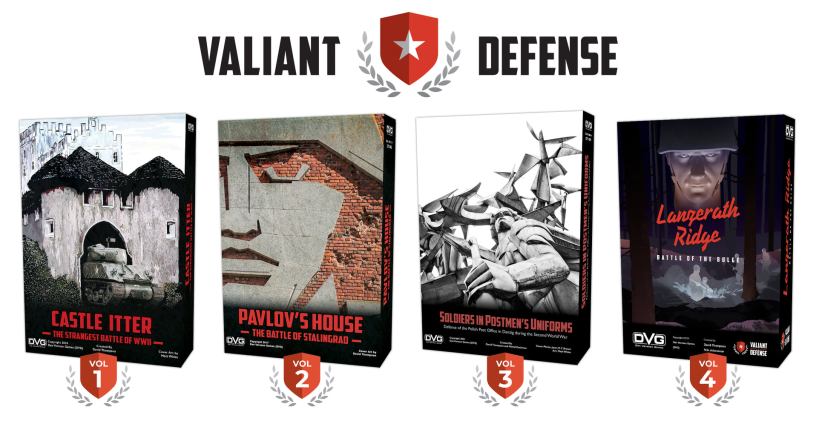
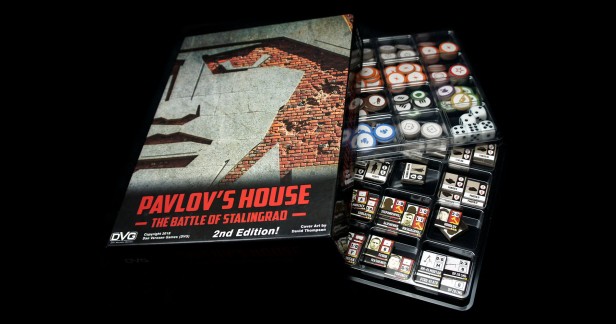
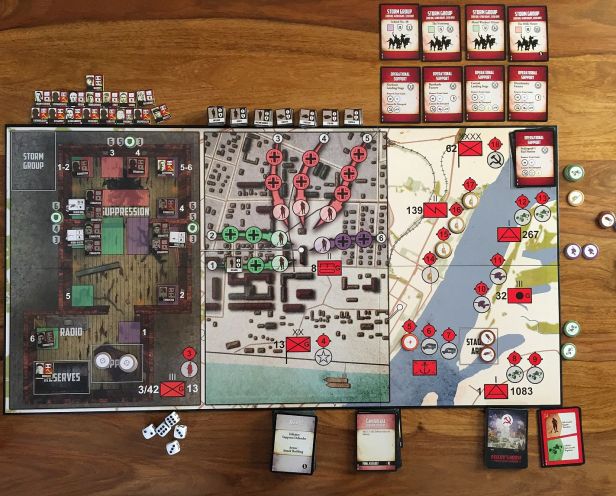
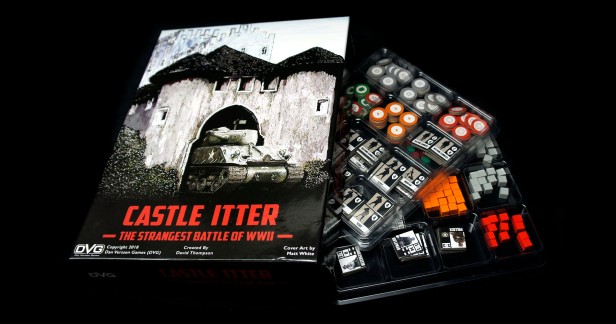
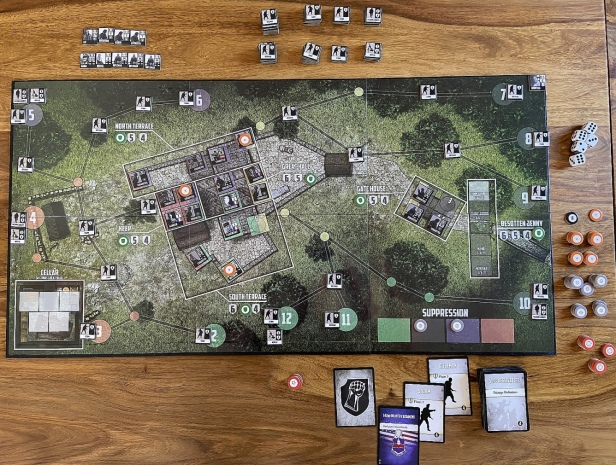
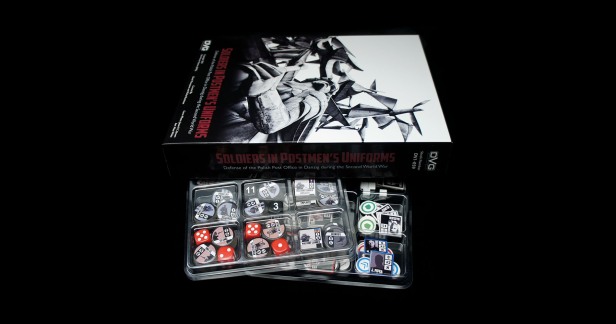
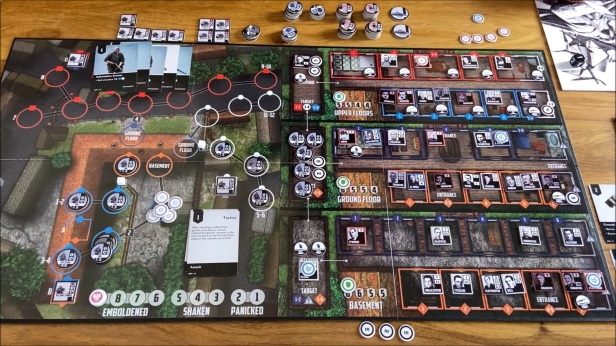
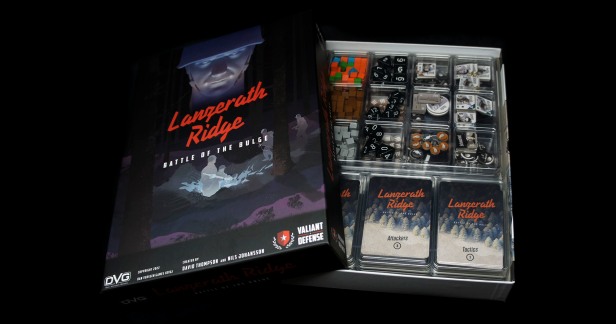
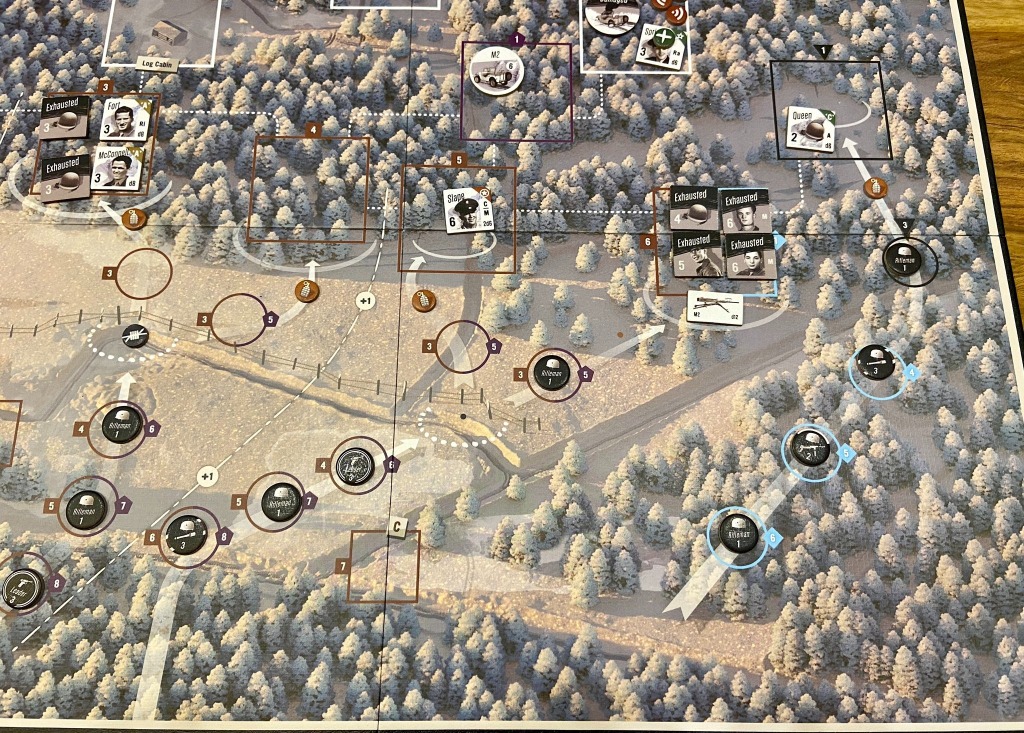
Pavlov’s House is the only one I’ve played, and that in app form. I will definitely have to pick up at least one of these to try now that I actually have a table again
LikeLiked by 1 person
I think you will really like them!
LikeLiked by 1 person
Great summaries and reviews. Thanks!
LikeLiked by 1 person
Enjoy – and play those great games!
LikeLike
Am playing Lanzerath Ridge based off your recommendation. Great game!
LikeLiked by 1 person
Greta to hear – enjoy!
LikeLike
Really hoping that apps gets released for SIPU and Lanzerath. Would like to be able to take them wherever I go.
LikeLiked by 1 person
My wish too. The series is perfect for digital implementation.
LikeLiked by 1 person
Agreed! I really like the Pavlov’s House app and would jump to a digital implementation of SIPU or Lanzerath Ridge!
LikeLike
Hopefully soon!
LikeLiked by 1 person